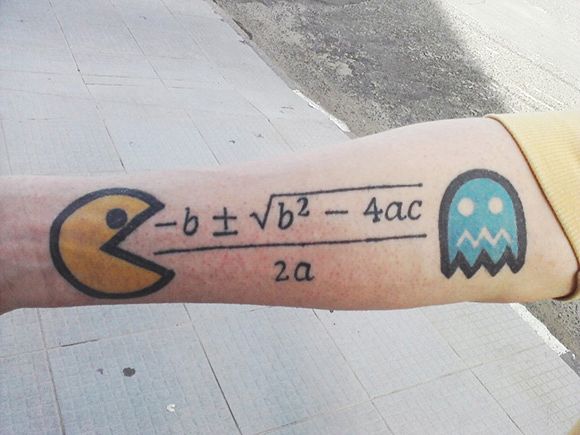Of Sound Mind and Body
 As professionals we get paid to think. But unlike professional athletes, we’ve forgotten the importance of mind and body.
As professionals we get paid to think. But unlike professional athletes, we’ve forgotten the importance of mind and body.
Clearly, mind is connected to body. (I’m not talking about a metaphysical connection, I’m talking about a physical physical connection.) There are electromechanical connections (nerves) that pass information between the two and hydromechanical connections (blood vessels) that pass chemistry (oxygen and glucose, among others). The coupling is clear – what happens in one influences the other, then the other retorts. This back-and-forth ringing is complex and real. From the outside, our system architecture is highly coupled, yet from the inside we forget.
Professional athletes want high performance, and they get it through hard work, good food, regimented eating schedules, and rest. From the outside it seems they’re all about body, but on the inside they’re all whole system optimization – mind and body. (Yogi Berra – baseball is 90% mental and the other half physical.) They know food and rest influence the body, but they also know it influences the mind. They remember, we forget.
As a professional thinker, I urge you to do all you can to think well. Eat well, eat regularly, and get rest. The cost of a bad decision is high, and they’re more likely when blood sugar is low and you’re tired. If you don’t do it for your career, do it for your company – remember, they’re paying you to think.
(Image credit: iStockphoto)
Win Hearts and Minds
 As an engineering leader you have the biggest profit lever in the company. You lead the engineering teams, and the engineering teams design the products. You can shape their work, you can help them raise their game, and you can help them change their thinking. But if you don’t win their hearts and minds, you have nothing.
As an engineering leader you have the biggest profit lever in the company. You lead the engineering teams, and the engineering teams design the products. You can shape their work, you can help them raise their game, and you can help them change their thinking. But if you don’t win their hearts and minds, you have nothing.
Engineers must see your intentions are good, you must say what you do and do what you say, and you must be in it for the long haul. And over time, as they trust, the profit lever grows into effectiveness. But if you don’t earn their trust, you have nothing.
But even with trust, you must be light on the tiller. Engineers don’t like change (we’re risk reducing beings), but change is a must. But go too quickly, and you’ll go too slowly. You must balance praise of success with praise of new thinking and create a standing-on-the-shoulders-of-giants mindset. But this is a challenge because they are the giants – you’re asking them to stand on their own shoulders.
How do you know they’re ready for new thinking? They’re ready when they’re willing to obsolete their best work and to change their work to make it happen. Strangely, they don’t need to believe it’s possible – they only need to believe in you.
Now the tough part: There’s a lot of new thinking out there. Which to choose?
Whatever the new thinking, it must make sense at a visceral level, and it must be simple. (But not simplistic.) Don’t worry if you don’t yet have your new thinking; it will come. As a seed, here are my top three new thinkings:
Define the problem. This one cuts across everything we do, yet most underwhelm it. To get there, ask your engineers to define their problems on one page. (Not five, one.) Ask them to use sketches, cartoons, block diagram, arrows, and simple nouns and verbs. When they explain the problem on one page, they understand the problem. When they need two, they don’t.
Test to failure. This one’s subtle but powerful. Test to define product limits, and don’t stop until it breaks. No failure, no learning. To get there, resurrect the venerable test-break-fix cycle and do it until you run out of time (product launch.) Break the old product, test-break-fix the new product until it’s better.
Simplify the product. This is where the money is. Product complexity drives organizational complexity – simplify the product and simply everything. To get there, set a goal for 50% part count reduction, train on Design for Assembly (DFA), and ask engineering for part count data at every design review.
I challenge you to challenge yourself: I challenge you to define new thinking; I challenge you to help them with it; I challenge you to win their hearts and minds.
Fix The Economy – Connect The Engineer To The Factory
 Rumor has it, manufacturing is back. Yes, manufacturing jobs are coming back, but they’re coming back in dribbles. (They left in a geyser, so we still have much to do.) What we need is a fire hose of new manufacturing jobs.
Rumor has it, manufacturing is back. Yes, manufacturing jobs are coming back, but they’re coming back in dribbles. (They left in a geyser, so we still have much to do.) What we need is a fire hose of new manufacturing jobs.
Manufacturing jobs are trickling back from low cost countries because companies now realize the promised labor savings are not there and neither is product quality. But a trickle isn’t good enough; we need to turn the tide; we need the Mississippi river.
For flow like that we need a fundamental change. We need labor costs so low our focus becomes good quality; labor costs so low our focus becomes speed to market; labor costs so low our focus becomes speed to customer. But the secret is not labor rate. In fact, the secret isn’t even in the factory.
The secret is a secret because we’ve mistakenly mapped manufacturing solely to making (to factories). We’ve forgotten manufacturing is about designing and making. And that’s the secret: designing – adding product thinking to the mix. Design out the labor.
There are many names for designing and making done together. Most commonly it’s called concurrent engineering. Though seemingly innocuous, taken together, those words have over a thousand meanings layered with even more nuances. (Ask someone for a simple description of concurrent engineering. You’ll see.) It’s time to take a step back and demystify designing and making done together. We can do this with two simple questions:
- What behavior do we want?
- How do we get it?
What’s the behavior we want? We want design engineers to understand what drives cost in the factory (and suppliers’ factories) and design out cost. In short, we want to connect the engineer to the factory.
Great idea. But what if the factory and engineer are separated by geography? How do we get the behavior we want? We need to create a stand-in for the factory, a factory surrogate, and connect the engineer to the surrogate. And that surrogate is cost. (Cost is realized in the factory.) We get the desired behavior when we connect the engineer to cost.
When we make engineering responsible for cost (connect them to cost), they must figure out where the cost is so they can design it out. And when they figure out where the cost is, they’re effectively connected to the factory.
But the engineers don’t need to understand the whole factory (or supply chain), they only need to understand places that create cost (where the cost is.) To understand where cost is, they must look to the baseline product – the one you’re making today. To help them understand supply chain costs, ask for a Pareto chart of cost by part number for purchased parts. (The engineers will use cost to connect to suppliers’ factories.) The new design will focus on the big bars on the left of the Pareto – where the supply chain cost is.
To help them understand your factory’s cost, they must make two more Paretos. The first one is a Pareto of part count by major subassembly. Factory costs are high where the parts are – time to put them together. The second is a Pareto chart of process times. Factory costs are high where the time is – machine capacity, machine operators, and floor space.
To make it stick, use design reviews. At the first design review – where their design approach is defined – ask engineering for the three Paretos for the baseline product. Use the Pareto data to set a cost reduction goal of 50% (It will be easily achieved, but not easily believed.) and part count reduction goal of 50%. (Easily achieved.) Here’s a hint for the design review – their design approach should be strongly shaped by the Paretos.
Going forward, at every design review, ask engineering to present the three Paretos (for the new design) and cost and part count data (for the new design.) Engineering must present the data themselves; otherwise they’ll disconnect themselves from the factory.
To seal the deal, just before full production, engineering should present the go-to-production Paretos, cost, and part count data.
What I’ve described may not be concurrent engineering, but it’s the most profitable activity you’ll ever do. And, as a nice side benefit, you’ll help turn around the economy one company at a time.
Stop Doing – it will double your productivity
 For the foreseeable future, there will be more work than time. Yet year-on-year we’re asked to get more done and year-on-year we pull it off. Most are already at our maximum hour threshold, so more hours is not the answer. The answer is productivity.
For the foreseeable future, there will be more work than time. Yet year-on-year we’re asked to get more done and year-on-year we pull it off. Most are already at our maximum hour threshold, so more hours is not the answer. The answer is productivity.
Like it or not, there are physical limits to the number of hours worked. At a reasonable upper our bodies need sleep and our families deserve our time. And at the upper upper end, a 25 hour day is not possible. Point is, at some point we draw a line in the sand and head home for the day. Point is, we have finite capacity.
As a thought experiment, pretend you’re at (or slightly beyond) your reasonable upper limit and not going to work more hours. If your work stays the same, your output will be constant and productivity will be zero. But since productivity will increase, your work must change. No magic here, but how to change your work?
Changing your work is about choice – the choice to change your work. You know your work best and you’re the best one to choose. And your choice comes down to what you’ll stop doing.
The easiest thing to stop doing is work you’ve just completed. It’s done, so stop. Finish one, start one is the simplest way to go through life, but it’s not realistic (and productivity does not increase.) Still, it makes for a good mantra: Stop starting and start finishing.
The next things to stop are activities that have no value. Stop surfing and stop playing Angry Birds. Enough said. (If you need professional help to curb your surfing habit, take a look at Leechblock. It helped me.)
The next things to stop are meetings. Here are some guidelines:
- If the meeting is not worth a meeting agenda, don’t go.
- If it’s a status meeting, don’t go – read the minutes.
- If you’re giving status at a status meeting, don’t go – write a short report.
- If there’s a decision to be made, and it affects you, go.
The next thing to stop is email. The best way I know to kick the habit is a self-mandated time limit. Here are some specific suggestions:
- Don’t automatically connect your email to the server – make yourself connect to it.
- Create an email filter for the top ten most important people (You know who they are.) to route them to your Main inbox. Everyone else is routed to a Read Later inbox.
- Check email for fifteen minutes in the morning and fifteen minutes in the afternoon. Start with the Main inbox (important people) and move to the Read Later inbox if you have time. If you don’t have time for the Read Laters, that’s okay – read them later.
- Create an email rule that automatically deletes unread emails in two days and read ones in one.
- Let bad things happen and adjust your email filters and rules accordingly.
Once you’ve chosen to stop the non-productive work, you’ll have more than doubled your productive hours which will double your productivity. That’s huge.
The tough choices come when you must choose between two (or more) sanctioned projects. There are also tricks for that, but that’s different post.
Run From Your Success
 Don’t worry about your biggest competitor – they’re not your biggest competitor. You’ve not met your biggest competitor. Your biggest competitor is either from another industry or it’s three guys and a dog toiling away in their basement.
Don’t worry about your biggest competitor – they’re not your biggest competitor. You’ve not met your biggest competitor. Your biggest competitor is either from another industry or it’s three guys and a dog toiling away in their basement.
Certainly it’s impossible to worry about a competitor we’ve not met, but that’s just what we’ve got to do. We’ve got to use thought-shifting mechanisms to help us see ourselves from the framework of our unknown competitor.
Our unknown competitor doesn’t have much – no fully functional products, no fully built-out product lines, and no market share. And that’s where we must shift our thinking – to a place of scarcity – so we can see ourselves from their framework. We’ve got to look down (in the S-curve sense), sit ourselves at the bottom, and look up at our successful selves. It’s the best way to move from self-cherishing to self-dismantling.
To start, we must create our logical trajectory. First, define where we are and where we came from. Then, with a ruler aligned to the points, extend a line into the future. That’s our logical trajectory – an extrapolation in the direction of our success. Along this line we will do more of what got us here, more of what we’ve done. Without giving ground on any front, we will protect market share and build more. We’ve now defined how we see ourselves. We’ve now defined the thinking that could be our undoing.
Now we must force enlightenment on ourselves. We create an illogical trajectory where we see ourselves from a success-less framework. In this framework less is more; more-of-the-same is displaced with more-of-something-else; and success is a weakness. We know we’re sitting in the rights space when the smallest slice of incremental market share looks like a big, juicy bite – like it looks to our unknown competitor.
The disruptive technology created by our unknown competitor will start innocently. Immature at first, the disruptive technology will do most things poorly but do one thing better. Viewed from our success framework we will see only limitations and dismiss it, while our unknown competitors will see opportunity. We will see the does-most-things-poorly part and they’ll see the one-thing-better part. They will sell to a small segment that values the one-thing-better part.
In another variant, an immature disruptive technology will do less with far less. From our success framework we will see “less” while from their scarcity framework they will see “more”. They will sell a simpler product that does less for a price that’s far less. (And make money.)
Here’s the one that’s most frightening: an immature technology that does all things poorly but does them without a fundamental limitation of our technology. From our framework the limitation is so fundamental we won’t let ourselves see it. This limitation is un-seeable because we’ve built our business around it. (Think Kodak film.) This flavor of disruptive technology can put our business model out of business, yet we’ll dismiss it.
We’ll know we’ve shifted our thinking to the right place when we see our unknown competitors not as bottom-feeders but as hungry competitors who see our scraps as a smorgasbord.
We’ll know our thinking’s right when see not self-destruction, but self-disruption.
We’ll know all is right with the world we’re working on disruptive technologies to disrupt ourselves, disruptive technologies with the potential to create business models so compelling that we’ll gladly run from our success.
Heroes of the Company
 If I was a company, the first thing I’d do is invest in my engineering teams. But not for the reasons we normally associate with engineering. Not for more function and features, not for product robustness, not technology, and not patents. I would invest in engineering for increased profits.
If I was a company, the first thing I’d do is invest in my engineering teams. But not for the reasons we normally associate with engineering. Not for more function and features, not for product robustness, not technology, and not patents. I would invest in engineering for increased profits.
When it comes to their engineering divisions, other companies think minimization – fewest heads, lowest wages, least expensive tools. Not me. I’m all about maximization – smartest, best trained, and the best tools. That’s how I like to maximize profits. To me, investing in my engineering teams gives me the highest return on my investment.
Engineers create the products I sell to my customers. I’ve found when my best engineers sit down and think for a while they come up with magical ideas that translate into super-performing products, products with features that differentiate me from my cousin companies, and products that flat-out don’t break. My sales teams love to sell them (Sure, I pay a lot in bonuses, but it’s worth it.), my marketing teams love to market them, and my factory folks build them with a smile.
Over my life I’ve developed some simple truisms that I live by: When I sell more products, I make more profits; when my products allow a differentiated marketing message, I sell more and make more profits; and when my product jumps together, my quality is better, and, you guessed it, I make more profits. All these are good reasons to invest in engineering, but it’s not my reason. All this increased sales stuff is good, but it’s not great. It’s not my real reason to invest in engineering. It’s not my secret.
When I was younger I vowed to take my secret to the grave, but now that I’ve matured (and filled up several banks with money), I think it’s okay to share it. So, here goes.
My real reason to invest in engineering is material cost reduction. Yes, material cost reduction. My materials budget is one of my largest line items and I help my engineers reduce it with reckless abandon (and the right tools, time, training, and teacher.) I’ve asked my lean folks to reduce material cost, but they’ve not been able to dent it. Sure, they’ve done a super job with inventory reduction (I get a one-time carrying cost reduction.), but no material cost reduction from my lean projects. I’ve also asked my six sigma organization to reduce material costs, but they, too, have not made a dent. They’ve improved my product quality, but that doesn’t translate into piles of money like material cost reduction.
Now, I know what you’re thinking: Why, Mrs. Company, are you wasting engineering’s time with cost? Cost is manufacturing’s responsibility – they should reduce it, not engineering. Plain and simple – that’s not what I believe, and neither do my engineers. They know they create cost to enable function, good material cost – worth every penny. But they also know all other cost is bad. And since they know they design in cost, they know they’re the ones that must design it out. And they’re good at it. With the right tools, time, and training, they typically reduce material costs by 50%. Do the math –material cost for your highest volume product times 50% – year-on-year. Piles of money.
I’ve learned over the years increasing sales is difficult and takes a lot of work. I’ve also learned I can make lots of money reducing material costs without increasing sales. In fact, even during the recent downturn, through my material cost reductions I made more money than ever. I have my design engineers to thank for that.
Company-to-company, I know things have been tough for us over the last years, and money is still tight. But if you have a little extra stashed away, I urge you to invest in your engineering organization. It makes for great profits.
Upcoming Workshop on Systematic DFMA Deployment – June 2012
Systematic DFMA Deployment – How To Implement for Increased Profits
 I am running a half-day workshop on June 13 in Providence, RI. The workshop is part of the 2012 International Forum on Design for Manufacturing and Assembly. I will focus on how to increase profits and incorporate DFMA into your product development process.
I am running a half-day workshop on June 13 in Providence, RI. The workshop is part of the 2012 International Forum on Design for Manufacturing and Assembly. I will focus on how to increase profits and incorporate DFMA into your product development process.
The conference (June 11-13) is the yearly gathering of the world’s DFMA experts. It is THE place to learn about DFMA and see examples and results from leading companies.
(I am also presenting a paper at the conference – Conference Program).
I urge the product development community to attend.
I hope to finally meet you in person.
Can’t Say NO
- Yes is easy, no is hard.
- Sometimes slower is faster.
- Yes, and here’s what it will take:
- The best choose what they’ll not do.
- Judge people on what they say no to.
- Work and resources are a matched pair.
- Define the work you’ll do and do just that.
- Adding scope is easy, but taking it out is hard.
- Map yes to a project plan based on work content.
- Challenge yourself to challenge your thinking on no.
- Saying yes to something means saying no to something else.
- The best have chosen wrong before, that’s why they’re the best.
- It’s better to take one bite and swallow than take three and choke.
Be Your Stiffest Competitor
 Your business is going away. Not if, when. Someone’s going to make it go away and it might as well be you. Why not take control and make it go away on your own terms? Why not make it go away and replace it with something bigger and better?
Your business is going away. Not if, when. Someone’s going to make it go away and it might as well be you. Why not take control and make it go away on your own terms? Why not make it go away and replace it with something bigger and better?
Success is good, but fleeting. Like a roller coaster with up-and-up clicking and clacking, there’s a drop coming. But with a roller coaster we expect it – there’s always a drop. (That’s what makes it a roller coaster.) We get ready for it, we brace ourselves. Half-scared and half-excited, electricity fills us, self-made fight-or-flight energy that keeps us safe. I think success should be the same – we should expect the drop.
More strongly we should manage the drop, make it happen on our terms. But that’s going to be difficult. Success makes it easy to unknowingly slip into protecting-what-we-have mode. If we’re to manage the drop, we must learn to relish it like the roller coaster. As we’re ascending – on the way up – we must learn to create a healthy discomfort around success, like the sweaty-palm feeling of the roller coaster’s impending wild ride.
A sky-is-falling approach won’t help us embrace the drop. With success all around, even the best roller coaster argument will be overpowered. The argument must be based on positivity. Acknowledge success, celebrate it, and then challenge your organization to improve on it. Help your organization see today’s success as the foundation for the future’s success – like standing on the shoulders of giants. But in this case, the next level of success will be achieved by dismantling what you’ve built.
No one knows what the future will be, other than there will be increased competition. Hopefully, in the future, your stiffest competitor will be you.
Seeing Things As They Are
 It’s tough out there. Last year we threw the kitchen sink at our processes and improved them, and now last year’s improvements are this year’s baseline. And, more significantly, competition has increased exponentially – there are more eager countries at the manufacturing party. More countries have learned that manufacturing jobs are the bedrock of sustainable economy. They’ve designed country-level strategies and multi-decade investment plans (education, infrastructure, and energy technologies) to go after manufacturing jobs as if their survival depended on them. And they’re not just making, they’re designing and making. Country-level strategies and investments, designing and making, and citizens with immense determination to raise their standard of living – a deadly cocktail. (Have you seen Hyundai’s cars lately?)
It’s tough out there. Last year we threw the kitchen sink at our processes and improved them, and now last year’s improvements are this year’s baseline. And, more significantly, competition has increased exponentially – there are more eager countries at the manufacturing party. More countries have learned that manufacturing jobs are the bedrock of sustainable economy. They’ve designed country-level strategies and multi-decade investment plans (education, infrastructure, and energy technologies) to go after manufacturing jobs as if their survival depended on them. And they’re not just making, they’re designing and making. Country-level strategies and investments, designing and making, and citizens with immense determination to raise their standard of living – a deadly cocktail. (Have you seen Hyundai’s cars lately?)
With the wicked couple of competition and profitability goals, we’re under a lot of pressure. And with the pressure comes the danger of seeing things how we want them instead of how they are, like a self-created optical illusion. Here are some likely optical illusion A-B pairs (A – how we want things; B – how they are):
A. Give people more work and more gets done. B. Human output has a physical limit, and once reached less gets done – and spouses get angry. A. Do more projects in parallel to generate more profit. B. Business processes have physical limits, and once reached projects slow and everyone works harder for the same output. A. Add resources to the core project team and more projects get done. B. Add resources to core projects teams and utilization skyrockets for shared resources – waiting time increases for all. A. Use lean in product development (just like in manufacturing) to launch new products better and faster. B. Lean done in product development is absolutely different than in manufacturing, and design engineers don’t take kindly to manufacturing folks telling them how to do their work. A. Through negotiation and price reduction, suppliers can deliver cost reductions year-on-year. B. The profit equation has a physical limit (no profit), and once reached there is no supplier. A. Use lean to reduce product cost by 5%. B. Use DFMA to reduce product cost by 50%.Competition is severe and the pressure is real. And so is the danger to see things as we want them to be. But there’s a simple way to see things as they are: ask the people that do the work. Go to the work and ask the experts. They do the work day-in-day-out, and they know what really happens. They know the details, the pinch points, and the critical interactions.
To see things as they are, check your ego at the door, and go ask the experts – the people that do the work.
Lean and Supply Chain Sensitivity
 At every turn, lean has increased profits in the factory. Its best trick is to look at the work through a time lens, see wasted time, and get rid of it.
At every turn, lean has increased profits in the factory. Its best trick is to look at the work through a time lens, see wasted time, and get rid of it.
Work is blocked by problems. You watch the work to spot blockages in the form of piles, otherwise known as inventory. When you find a pile, you know the problem is one operation downstream.
As lean works its magic, inventory is reduced, which decreases carrying costs. More importantly, however, it also reduces the time to see a problem. Whether the problem is related to quality, delivery or resources, everything stops immediately. It’s clear what to fix, and there’s incentive to fix it quickly because with lean, the factory is more sensitive to problems.
What works in the factory will also work in the supply chain, and that’s where lean is going.

 Mike Shipulski
Mike Shipulski